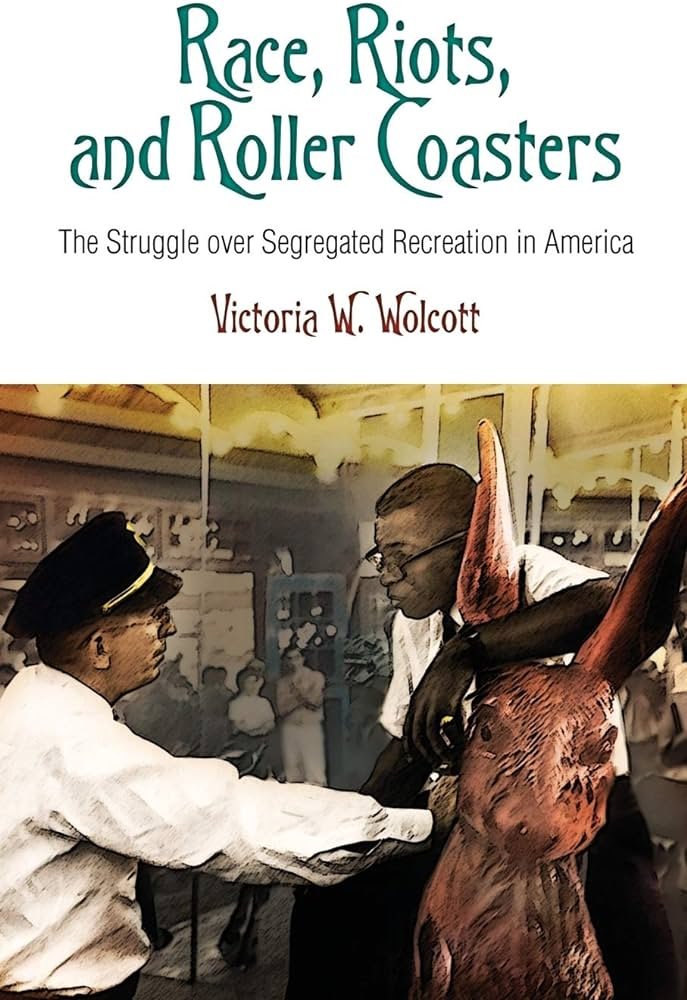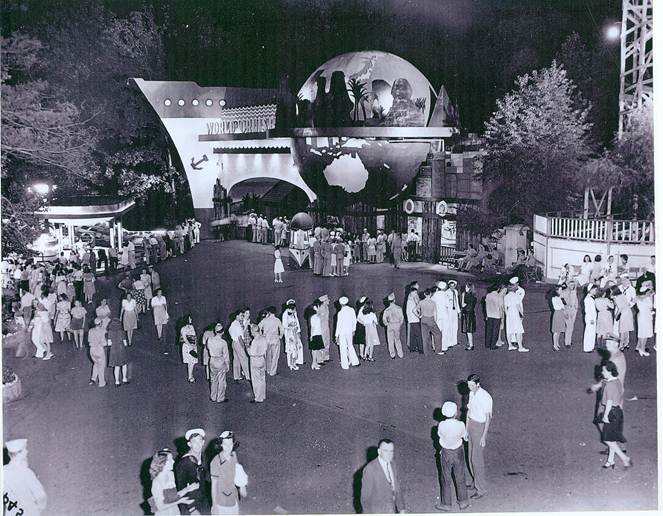This book about the successful struggle to integrate amusement parks ends with a discordantly sad final chapter, in which “the majority of traditional urban amusement parks closed by the late 1960s and early 1970s.” Some stories from the book: amazon.com/Race-Riots-Rol…






Olympic Park, Irvington, New Jersey (1903-1965): “Olympic Park remained segregated until the mid-1950s and Newark’s black community felt unwelcome even when they gained access to the park. By 1965, however, young blacks began to take buses to the park to enjoy daylong excursions. On opening day of 1965 a large group of Newark teenagers, numbering perhaps one thousand, arrived at the park. They expected to pay only ten cents per ride, a tradition on opening day that the park owner had eliminated that year. By the evening many had run out of money as a result. Fearing trouble, park officials tried to close early. Guards ushered the angry teenagers from the park, but there were no buses to take them back to Newark because of the early closing time. The crowds then descended on downtown Irvington, shattering some shop windows and frightening pedestrians…
Two weeks after the riot the town council met to discuss denying the park’s license renewal… By the end of the season the owners had sold Olympic Park to land developers, and Newark youth no longer had access to any major amusement parks.”




Two weeks after the riot the town council met to discuss denying the park’s license renewal… By the end of the season the owners had sold Olympic Park to land developers, and Newark youth no longer had access to any major amusement parks.”




Glen Echo Amusement Park, Montgomery County, Maryland (1899-1968): “In Glen Echo amusement park outside Washington, D.C., another classic carousel was the site of a successful desegregation effort by civil rights activists in 1960. Six years later, on the Monday following Easter, large numbers of African American teenagers boarded buses in Washington and headed to Glen Echo… Alarmed by the crowds and fearing vandalism, park operators shut down their rides early, around 6:00pm. The youths had purchased ride tickets that they could not use and were frustrated and angry. At this point the bus company decided to suspend service back to the city because they could not be guaranteed police protection. Several hundred teenagers had to walk many miles to their urban homes. During this walk they threw bottles and stones, frightening nearby residents and smashing some windows on cars and houses…
Glen Echo reopened a week after the riot… Transportation to the park was limited to private cars when DC Transit ended its bus service from Washington. In addition, Glen Echo began to charge admission at the gate rather than allowing patrons to roam the park and pay for individual rides… These efforts failed to stem the park’s decreasing popularity. The final season for Glen Echo was 1968.”



Glen Echo reopened a week after the riot… Transportation to the park was limited to private cars when DC Transit ended its bus service from Washington. In addition, Glen Echo began to charge admission at the gate rather than allowing patrons to roam the park and pay for individual rides… These efforts failed to stem the park’s decreasing popularity. The final season for Glen Echo was 1968.”



Springlake Park, Oklahoma City (1922-1981): “On opening day, Easter Sunday, in 1971, a false rumor spread through the park that a white teenager had pushed an African American off the Big Dipper roller coaster. A dramatic fight broke out between blacks and whites inside the park. Park guards managed to throw most of the teenagers out of the park, but the teens confronted police in the surrounding parking area. Soon police fought with African American teenagers, who were joined by youth from nearby housing projects…
Springlake Park never recovered from the Easter riot in 1971… After years of decline the park closed in 1981.”



Springlake Park never recovered from the Easter riot in 1971… After years of decline the park closed in 1981.”



Fontaine Ferry Park, Louisville, Kentucky (1905-1969): “On opening day in 1969 nearly eight thousand people flooded into the park. Many were young black teenagers… By midafternoon a group of youths began to smash equipment and rob cashiers at rides and stands. Park management closed the gates two hours early, and the next day the owner announced Fontaine Ferry was closed for good. Fontaine Ferry had been fully desegregated for only four years before closing.”


“Most of the parks discussed in this book closed during the same period… This is not an exhaustive list.” All in all, a depressing but informative book about a type of entertainment that pretty much ceased to exist. /END 

• • •
Missing some Tweet in this thread? You can try to
force a refresh

 Read on Twitter
Read on Twitter





















